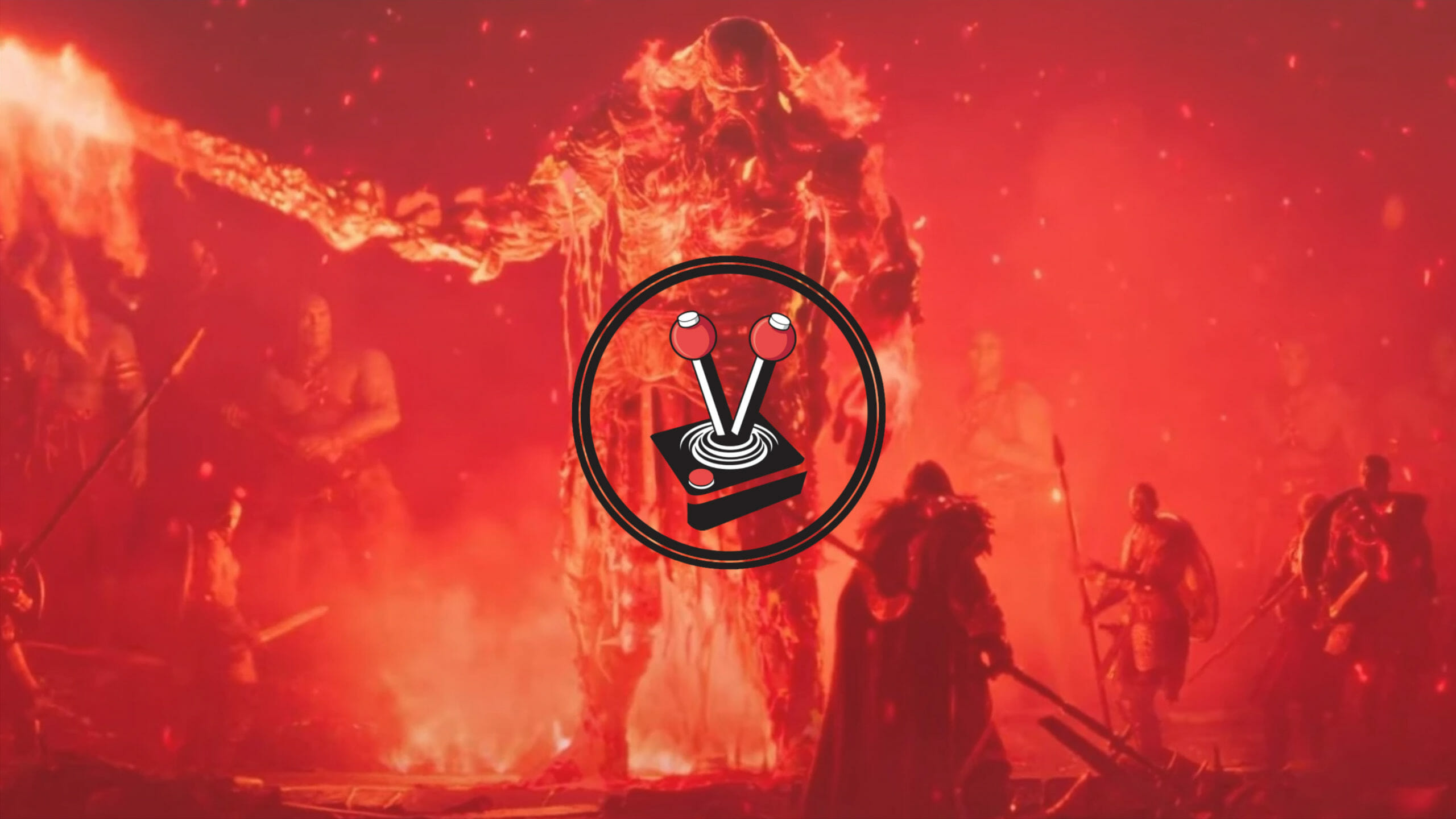Assassin’s Creed Valhalla is an absolutely massive video game. From an expansive story stretching the entirety of Dark Ages Britain, a small part of Vinland (where Assassin’s Creed III protagonist, Ratonhnhaké:ton’s tribe originates from), and the Isle of Skye; through to an entire saga spanning the mythical Norse realms, Valhalla went to extremes in ensuring players always had new sights to see. In its first batch of post-launch content, Ubisoft took players even further [to Ireland and France, respectively], effectively making Eivor one of the most travelled protagonists the franchise has ever seen. Now, Assassin’s Creed Valhalla: Dawn of Ragnarok sets Eivor up to explore a whole new region (read: realm) as they step back into the boots of Odin and travel to the dwarven realm of Svartalfheim.
Since the inception of the newer RPG-lite video games collectively known as the “Mythology Pack”, Assassin’s Creed has straddled the lines between mythology and reality, adding to the ever-expanding fiction based entirely on known historical fact. Where previous instalments had a good balance of “real-world” gameplay with a good bit of mythology sprinkled on top, Dawn of Ragnarok is an ambitious new title taking place entirely in the realm of infinite possibilities. Norse mythology is the sole focus in this expansion, for better and worse.
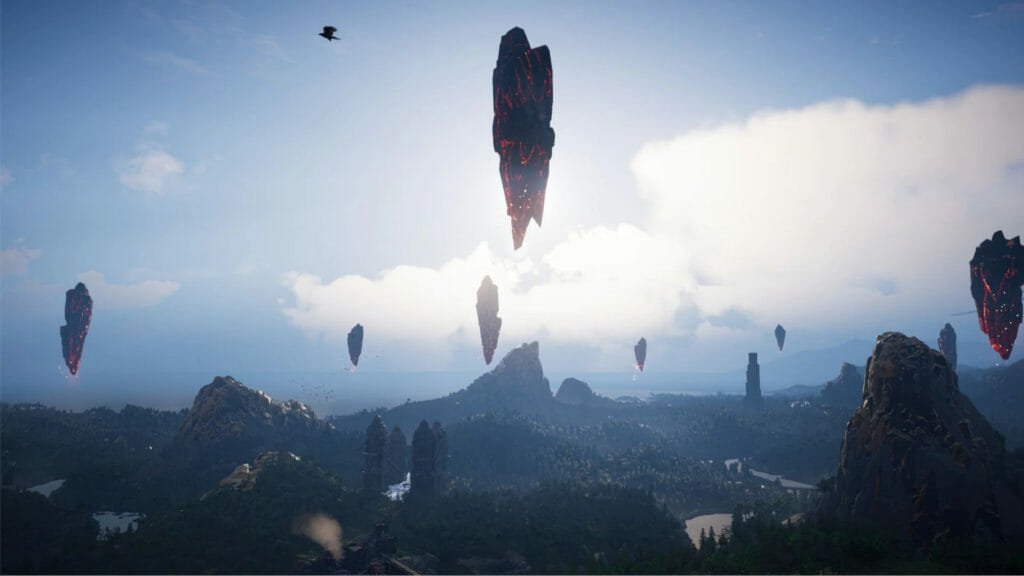
Unlike previous downloadable content, Dawn of Ragnarok acts as a massive new expansion absolutely meant for players who have already finished up most, if not all, of what Assassin’s Creed Valhalla has to offer. In order to access the content, the game recommends players have a power level of 340! It must be noted how Ubisoft makes it possible for eager beavers to enjoy the expansion earlier thanks to boosters (à la World of Warcraft), or as an entirely new adventure of its own via the New Game option. With that said, Dawn of Ragnarok picks up mere days after the events of the Asgard saga featured in the base game. Once players have chosen their preferred method of accessing the content, Eivor will receive a quest called Restless Dreams, which initiates the Svartalfheim Saga.
Once transported into Evior’s dreams, players once more step into the shoes of Odin (known as Havi by those who revere the deity), where he is immediately met with conflict. For unknown reasons, Surtr has kidnapped Odin’s son, Baldr, and is keeping the god trapped in a cave. Once the two meet face-to-face, they enter into battle. With neither fated to die that day, however, the battle ends in a stalemate as Surtr makes away with Baldr. Here, Odin takes on a personal journey of vengeance as he enters the realm of the dwarves where he soon finds it overrun by the fiery Muspelheim army. Although the story focuses solely on the mythology side of things, it does not go into how the myths in Eivor’s dream differs to the way in which the same story was handled by the Isu. While this is a bummer in one regard, it also comes as a blessing; particularly for those who want to do naught but explore and play god. Dawn of Ragnarok offers a much simpler premise compared to the likes of the base Assassin’s Creed Valhalla experience, but one that is arguably much more intriguing.
Unlike any other downloadable content for Assassin’s Creed Valhalla and its hundreds of singular stories, Dawn of Ragnarok has a whole lot more unified personality tied to the open world and its denizens. Dwarves, in particular, play a massive role in both Odin’s journey, and the player’s overall experience. There are countless stories to be heard, and because of the very nature of the game’s source material, almost all of them will tie in some way or another into Odin’s story (whether players are aware of this or not). Moreover, everything players do will always tie back into how much Odin will be able to improve both himself and his gear by the end of the experience. Thus, exploration and finding all sorts of missions and secrets are absolutely encouraged. It is not every day one can visit and explore every nook and cranny of the various realms in Norse mythology, after all. In all, the biggest new feature is none other than the setting.
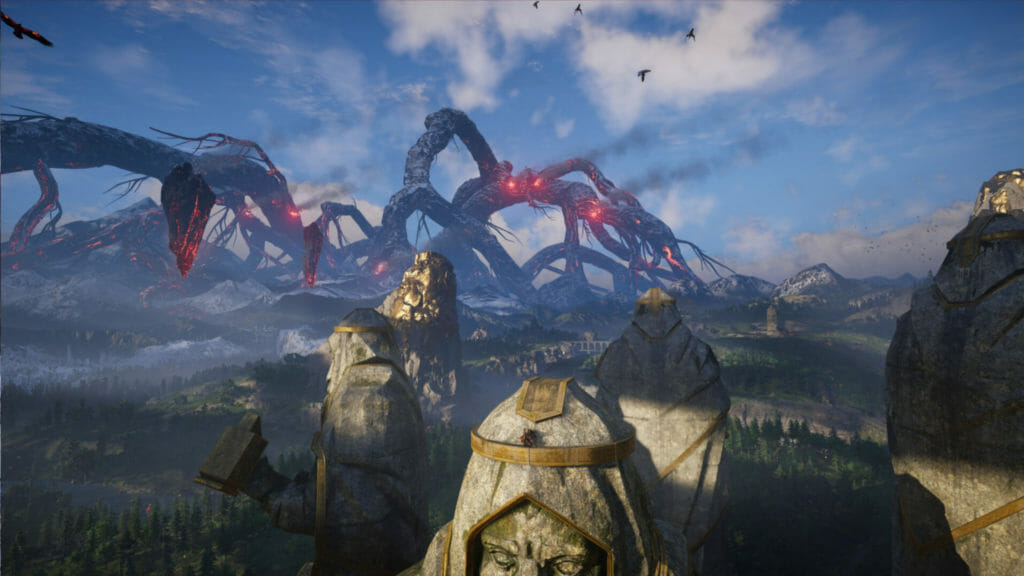
The realm of Svartalfheim is not like anything ever featured in an Assassin’s Creed game before. As Odin, players are immediately met with vast grassy plains beset by snow capped mountaintops. There are floating rocks dotted throughout the sky, and thanks to the Muspelheim invasion, fountains of magma flowing from volcanic rock piercing through the ground. The dwarves, who have been chased into hiding, all take shelter in enormous underground caves, while their gold and hard-rock clad fortresses and castles lay in ruin on the surface. Svartalfheim is beautiful, to say the least, and comes in as a stark contrast to the plains, fortresses, and mountains of England. Similarly, secrets are plentiful and collectibles are scattered throughout the land. There is so much, in fact, that roaming and exploring can make players lose countless hours.
Svartalfheim is not the only big new addition to the game, however. In the opening hour of the expansion, players are given a new dwarven weapon called the Hugr-Rip. As its name implies, Odin can use this weapon to “rip” the powers from slain enemies and use them as if they were his own. This is an incredible and much-needed new tool that would have been so good to have in Odin’s previous sagas! There is no better feeling than turning into a godly raven and assassinating enemies from above; teleporting from one enemy to another in the midst of battle, or even raining shards of deadly ice from the sky during the many boss battles featured in Dawn of Ragnarok. There are many interesting new abilities that drastically change the way the game is played and experimenting with them all is an awesome feeling… but the Hugr-Rip does not come without its faults — the most prominent being how one can only ever have two slotted powers.
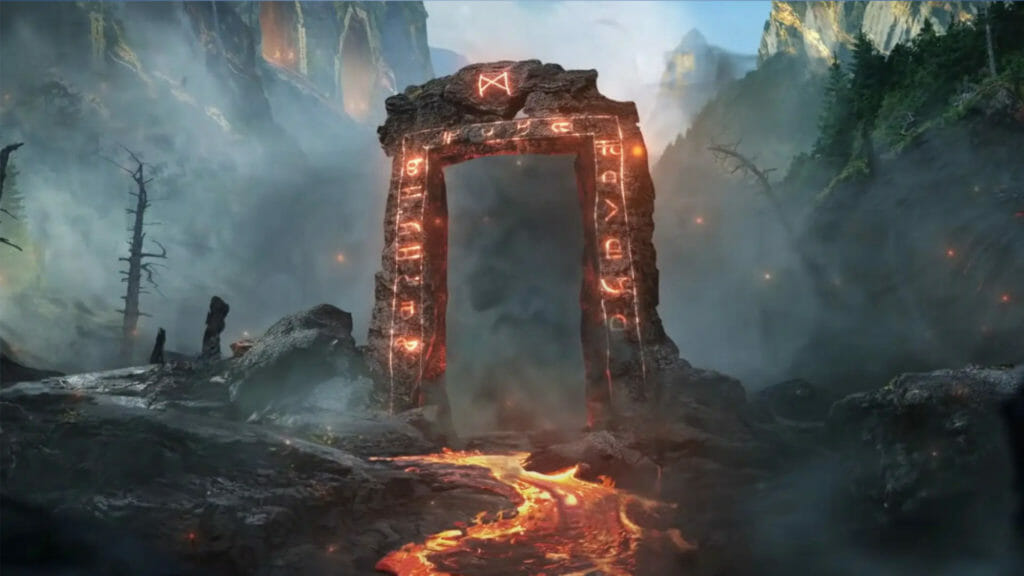
One of the most encouraged powers is the ability to take on the visage of a Muspel soldier, which affords Odin the ability to walk on magma, as well as blend in with the invading army. It comes into play so often that switching the Muspel power out with anything else limits a lot of the ground traversal one can do in the game. While it only makes sense why this power is needed at almost all times, it drastically limits what players can do with their remaining Hugr-Rip slot; and this limitation seems to remain throughout Dawn of Ragnarok’s core experience. Considering how Eivor can unlock new abilities throughout the base game and how skills are unlocked via the skill tree, logic would dictate a similar user experience for the dwarven weapon. Alas, the only “skill tree’ available focuses on upgrading the stolen powers themselves, as well the number of ‘uses’ the Hugr-Rip allows. In the thirty-odd hours played, there seems to be no way to upgrade the number of slots Odin has at his disposal. Therefore, the constant worry over which powers to switch out can be quite anxiety inducing – it would work better if done similarly to Eivor’s other abilities.
With that said, Dawn of Ragnarok does not revolve around the Hugr-Rip completely. The expansion comes with a few other completely new additions to the game; one such addition being the inclusion of a brand-new weapon type: the Atgeir. The Atgeir is a two-handed polearm hitting both fast and hard. It comes with its own new combo system allowing players to experience a brand-new scope of combat. As with previous mythical weapons, Svartalfheim also comes with its own version thereof: finding and defeating three elite warriors who roam the land will reward Odin with a unique new Atgeir that can be upgraded to divine status and have its “former glory restored”. With this in mind, it must be noted how Dawn of Ragnarok is very much an expansion and is no mere downloadable piece of content.
The Atgeir and Hugr-Rip are both welcome new additions, but the overall user experience remains the same across the board. Progression, from missions through to skill and character, are the exact same from base game through to Dawn of Ragnarok. Similarly, exploration and secrets make themselves known as players reach synchronise points, while Odin Sight reveals objectives and enemies while on the ground. Moreover, combat remains as predictable as ever, and stealth, while seemingly discouraged in some scenarios, remains as steadfast of a gameplay method as ever. All this to say that players who tire of the base experience will not find much new here, but then this expansion is also not for these players either.
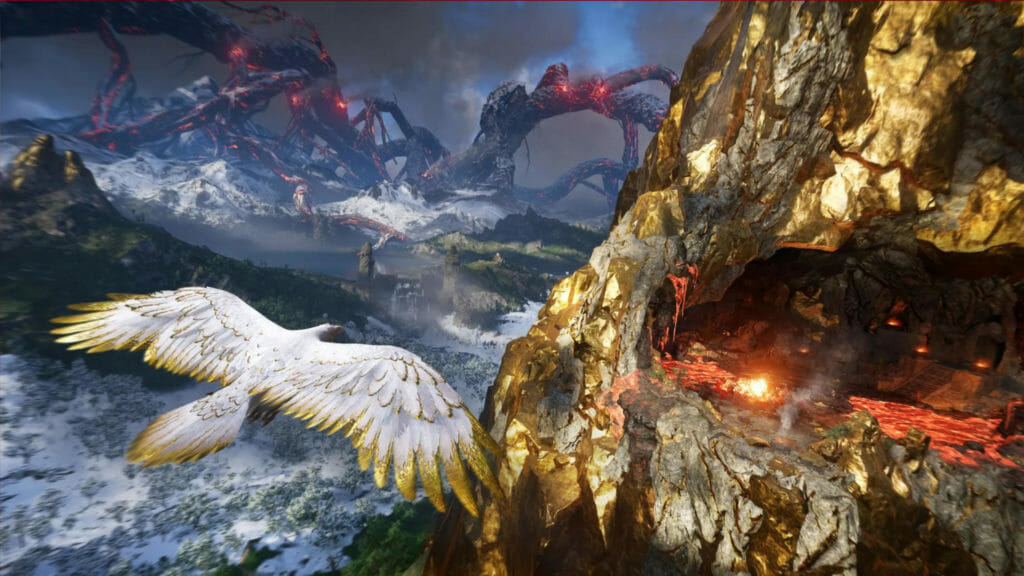
Dawn of Ragnarok is first and foremost, an end-game continuation of the Asgard story in the main game. Unlike Wrath of the Druids and Siege of Paris, players enter a brand-new world that is absolutely massive in scale. Similarly, gameplay additions and story attempt to reach ambitious new heights that only the likes of Norse Mythology would ever allow. With this in mind, it features a story that spans around 25 hours, and additional content to keep players busy for a good twenty thereafter. New gameplay additions like the Hugr-Rip and the Atgeir will keep fans of the base game engaged at all times too, making it a perfect expansion for players who want more of Odin. Dawn of Ragnarok is good, and will tide any fan over until the next game in the franchise comes around.
Verdict:
GOOD
| PROS | CONS |
| Svartalfheim! | Expansion takes place solely in the dream-realm. |
| Hugr-Rip and Atgeir are great new additions | Hugr-Rip has fixable limitations. |
| Continuation of Odin’s story and how it leads to the start of the end | No new Isu lore/story after the wonderful way the base game incorporated it into Eivor’s visions. |
Title reviewed on Window PC with code supplied by Ubisoft.
Review Methodology | Ethics Policy
Junior Editor at Vamers. From Superman to Ironman; Bill Rizer to Sam Fisher and everything in-between, Edward loves it all. He is a Bachelor of Arts student and English Major specialising in Language and Literature. He is an avid writer and casual social networker with a flare for all things tech related.

